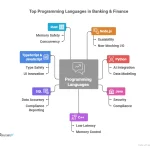
Purchase or lease is one of the biggest financial decisions a person will ever have to make, according to personal finance expert Erica Sandberg. Here she explores each option’s potential ramifications.
Leasing provides drivers with access to a new or near-new car at a monthly payment that’s often lower than purchasing. But drivers should keep in mind the mileage restrictions and any possible additional wear and tear charges at lease end.
Lower Monthly Payments
Leasing offers lower monthly payments than purchasing, making it ideal for drivers on tight budgets who wish to own newer vehicles without making large upfront deposits.
Lease agreements typically come with mileage restrictions that can lead to fees if exceeded, as well as charges if you return it before its end without purchasing the purchase option.
On the other hand, purchasing a vehicle requires an initial larger upfront investment but can save you more in the long run by building equity over time and avoiding expensive repair bills. Furthermore, this gives you more customization and personalization options for your ride.
Flexibility
Lease agreements offer an ideal short to medium term solution if you need a car but lack sufficient cash or credit. With good credit scores, most lease agreements offer vehicles at significantly reduced monthly rates than what’s listed on dealership advertisements.
Leasing may impose limitations such as mileage limits and extra charges for wear-and-tear. If you prefer having total control of your car and finances, buying may be your better choice; as with every payment made you’ll build equity that eventually can become ownership once your loan is paid off. But before making this important financial decision ensure you understand all potential ramifications.
No Upfront Costs
Renting is often considered an attractive financial alternative to purchasing, since you pay only for depreciation with lower monthly payments and no upfront investment required. Leasing can also provide significant tax advantages and savings potential when applied wisely – an attractive offer for those able to afford it!
Leasing vehicles is attractive to people looking for the latest car technology and prefer trading them every few years for newer models, however lease agreements typically have mileage restrictions as well as additional fees charged if excessive wear and tear occurs during a lease agreement.
A car purchase can be an excellent long-term financial decision, yet upfront costs and financing charges could restrict which models you can buy. Therefore, it’s crucial that you carefully examine which option best fits with your lifestyle, driving needs, finances and goals.
No Equity
Leasing can be an attractive option for people looking for a vehicle every few years who don’t mind mileage restrictions and potential additional wear-and-tear charges at lease-end. But, if ownership of the car is an important consideration for you, buying could be the better choice.
As with purchasing, purchasing allows you to build equity over time and sell it when the time comes – unlike leasing which has mileage limitations or rental agreements that you are bound by. Plus you won’t have to worry about getting rid of it later on!
No Ownership
Leasing is an affordable way for drivers on a tight budget who want the freedom of driving a new car without incurring heavy upfront costs. Unfortunately, leasing has some drawbacks such as not building equity or mileage restrictions; extra fees may apply if the car returns with more wear-and-tear than expected.
At the end of your lease, you don’t own the car and must return it. While buying is usually possible with certain terms and conditions in place, buyers should expect higher costs if purchasing outright. Furthermore, early termination penalties could add up over time, especially if leasing multiple cars at once; without your trade-in option to trade against, acquiring another will become much harder.






